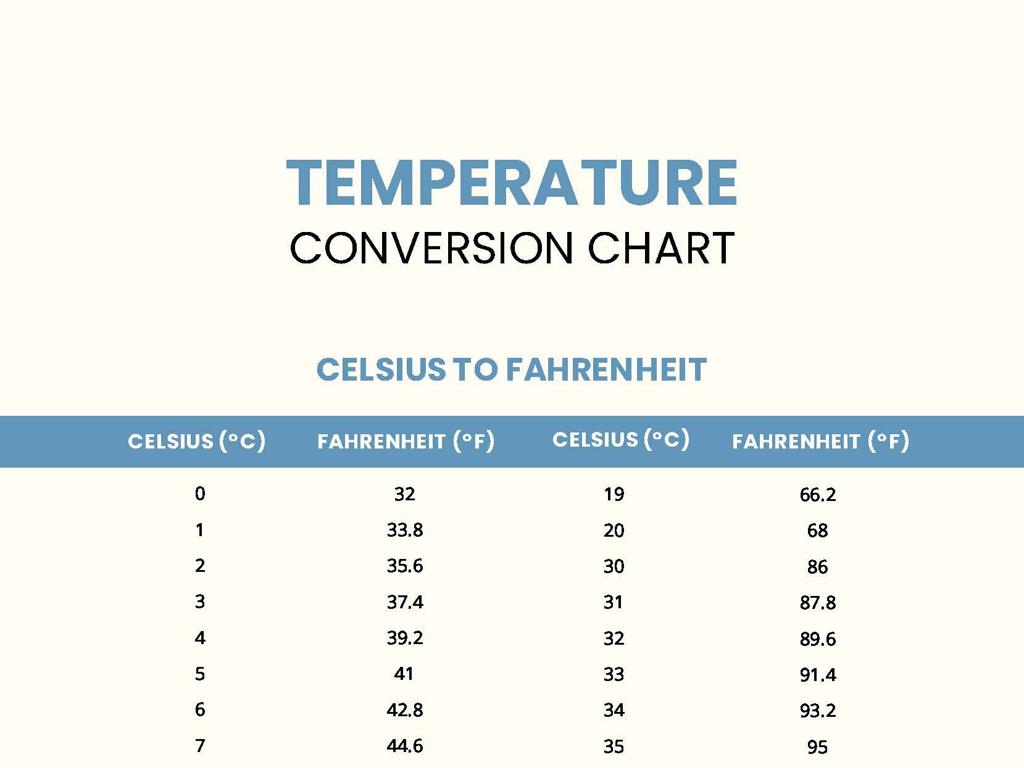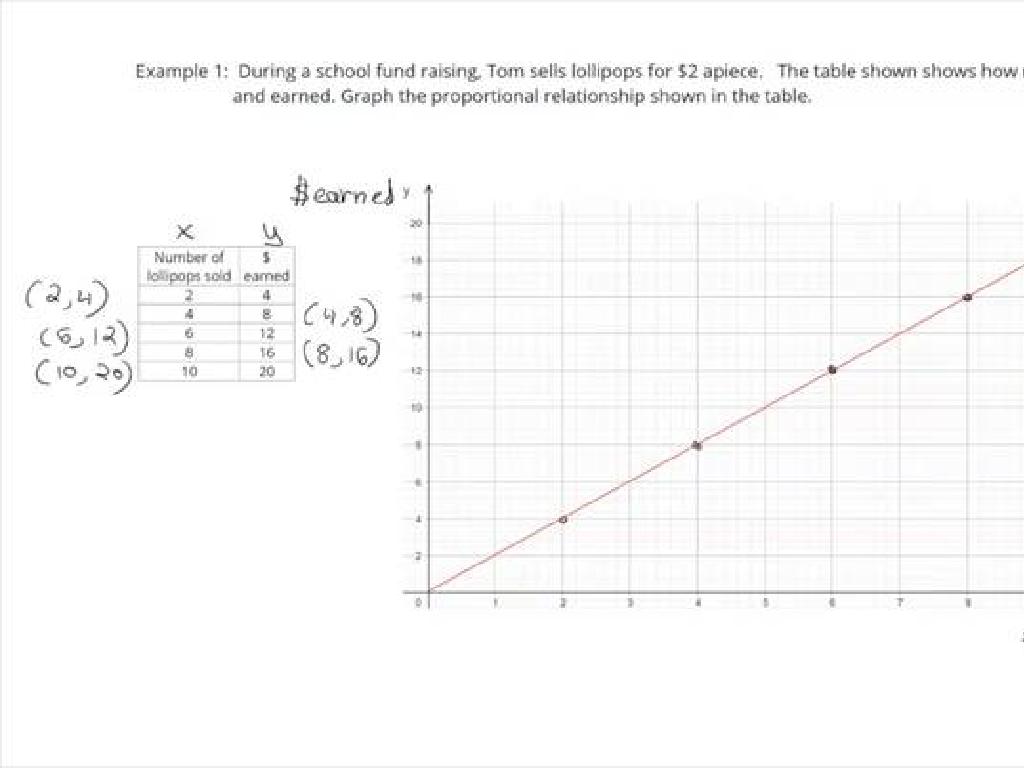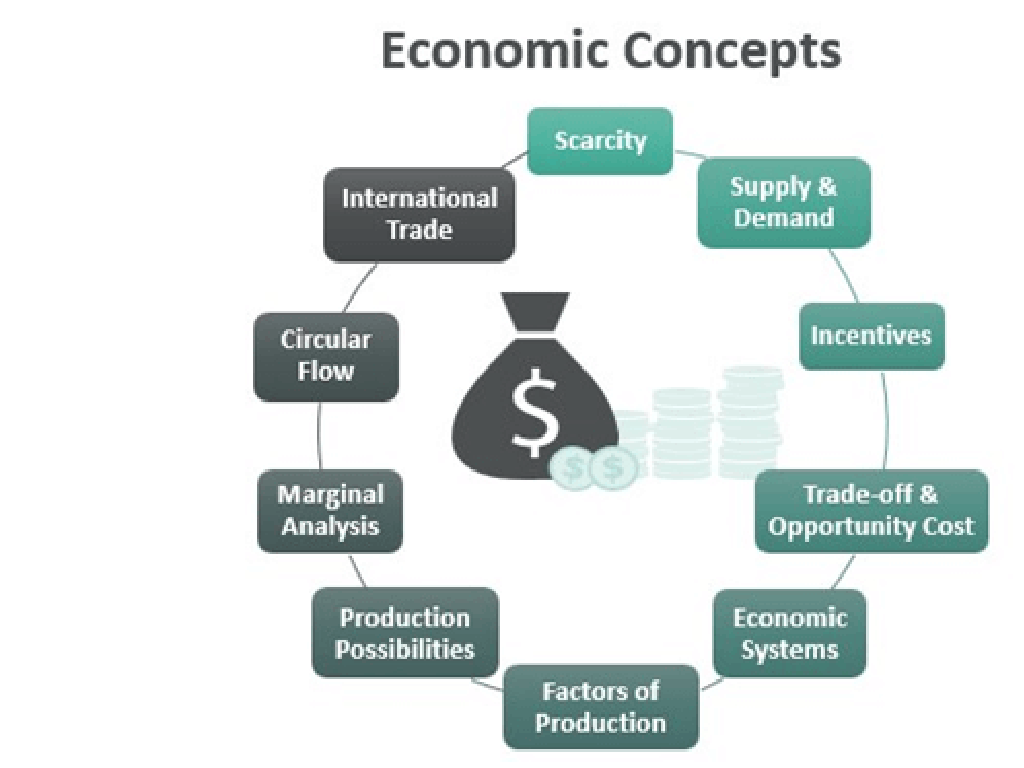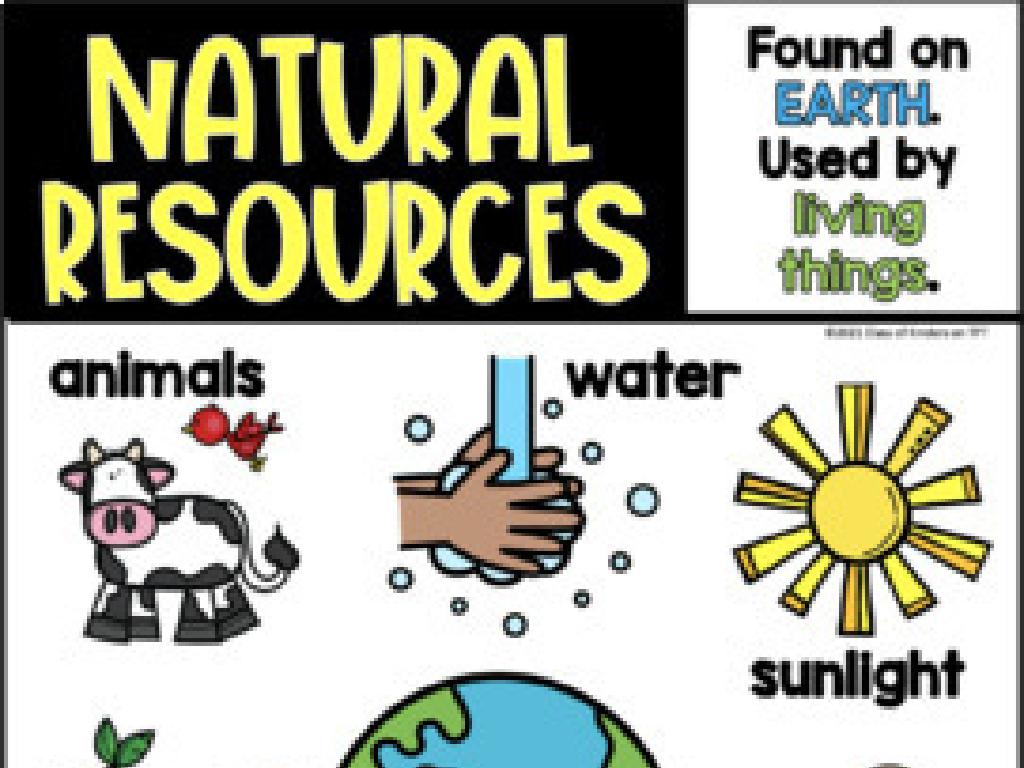Identify Ecosystems
Subject: Science
Grade: Fifth grade
Topic: Ecosystems
Please LOG IN to download the presentation. Access is available to registered users only.
View More Content
Welcome to Ecosystems!
– Explore our environment
– Define an ecosystem
– A community of living organisms interacting with their surroundings.
– Types of ecosystems
– Forests, deserts, oceans, and grasslands are a few types.
– Ecosystem examples
– Rainforest: diverse species. Desert: cacti & camels.
|
This slide introduces students to the concept of ecosystems within the broader topic of understanding our environment. Begin by discussing the environment as the surroundings in which plants and animals live. Then, define an ecosystem as a community where living organisms interact with each other and their physical environment. Highlight the different types of ecosystems, such as forests, deserts, oceans, and grasslands, and provide examples of each, emphasizing the unique characteristics and inhabitants of these ecosystems. Encourage students to think about the ecosystems that exist in their local area and the types of plants and animals that might be found there. This will help them connect the concept of ecosystems to their own experiences.
Components of an Ecosystem
– Biotic vs. Abiotic Factors
– Biotic: living things; Abiotic: non-living elements like water, sunlight.
– Interaction of Living & Non-Living
– Living things need non-living things to survive, like fish need water.
– Roles of Plants, Animals & Microbes
– Plants produce oxygen, animals help pollinate, microbes decompose waste.
|
This slide introduces students to the basic components that make up an ecosystem. Biotic factors include all the living components like animals, plants, and microorganisms, while abiotic factors encompass the non-living parts such as water, sunlight, and soil. Emphasize the interdependence between these factors: living organisms rely on non-living elements to survive and thrive. Discuss the specific roles that plants, animals, and microorganisms play in maintaining the balance of an ecosystem. For instance, plants are producers that create their own food through photosynthesis, animals can be consumers or pollinators, and microorganisms are decomposers that break down waste materials. Encourage students to think of examples from local ecosystems to illustrate these concepts.
Exploring Ecosystem Types
– Terrestrial vs. Aquatic Ecosystems
– Land-based vs. water-based habitats
– Forests, Deserts, Oceans, Grasslands
– Each has distinct climates and life forms
– Unique Ecosystem Characteristics
– Temperature, moisture, and terrain vary
– Diversity of Life in Ecosystems
|
This slide introduces students to the concept of different ecosystem types. Begin by explaining the two main categories: terrestrial (land-based) and aquatic (water-based) ecosystems. Highlight the four specific ecosystems: forests, known for dense trees; deserts, known for dry conditions; oceans, vast bodies of saltwater; and grasslands, dominated by grasses and few trees. Discuss the unique characteristics of each, such as temperature ranges, moisture levels, and terrain types, which determine the kinds of life forms that can thrive there. Emphasize the diversity of life and how each ecosystem supports different plant and animal species. Encourage students to think about how these ecosystems interact with each other and the importance of each to our planet.
Food Chains and Food Webs in Ecosystems
– Producers, Consumers, Decomposers
– Plants make their own food, animals eat plants or other animals, decomposers break down waste.
– Energy Flow in Ecosystems
– Sunlight to producers to consumers to decomposers, energy is passed along.
– Organisms’ Interconnectedness
– All living things depend on each other to survive.
– Importance of Each Role
|
This slide introduces students to the basic components of food chains and webs within ecosystems. Producers (like plants) are at the base, creating energy from sunlight. Consumers (animals) eat plants or other animals for energy. Decomposers (like fungi and bacteria) break down dead material, returning nutrients to the soil. Highlight how energy flows from the sun through this chain and how each organism is interconnected, relying on the others for survival. Emphasize the importance of each role in maintaining the balance of the ecosystem. Activities can include creating a food chain with local species or a game that illustrates the impact of removing an organism from the web.
Exploring Our Local Ecosystem
– Identify local ecosystems
– An ecosystem includes all living things in an area interacting with each other and also with their non-living environments.
– Observe biotic & abiotic factors
– Biotic factors are living things, like plants and animals. Abiotic factors are non-living, like water, light, and temperature.
– Discuss ecosystem importance
– Local ecosystems provide resources for humans and habitats for wildlife. They also help in maintaining ecological balance.
– Plan a visit to a local ecosystem
– Organize a field trip to a nearby park, forest, or any natural area to observe and learn about the ecosystem.
|
This slide aims to introduce students to the concept of ecosystems within their own community. Start by defining an ecosystem and explaining the difference between biotic and abiotic factors. Engage the students by asking them to list examples of local ecosystems and what living and non-living things they might find there. Highlight the importance of these ecosystems to our environment and well-being. Encourage students to think about how they can help preserve these areas. As an activity, plan a field trip to a local ecosystem, where students can apply their knowledge and observe real-life examples of the concepts discussed in class.
Human Impact on Ecosystems
– Human activities affect ecosystems
– Examples: Planting trees (positive) vs pollution (negative)
– Conservation efforts help ecosystems
– Protecting endangered species and natural parks
– Negative impacts harm habitats
– Overfishing and deforestation reduce biodiversity
– Our role in ecosystem preservation
– Recycling, using less plastic, and saving water
|
This slide aims to educate students on the various ways humans influence ecosystems, both positively and negatively. Discuss examples such as how planting trees can improve an ecosystem, while pollution can damage it. Emphasize the importance of conservation efforts, like protecting endangered species and maintaining natural parks. Highlight the negative impacts of human activities, such as overfishing and deforestation, and how they lead to a loss of biodiversity. Finally, engage students by talking about how they can contribute to preserving ecosystems through simple actions like recycling, reducing plastic use, and conserving water. Encourage them to think of other ways they can help at home or in their community.
Class Activity: Create Your Own Ecosystem
– Divide into groups for ecosystem model
– Include biotic and abiotic elements
– Biotic: plants, animals; Abiotic: rocks, water
– Build and present your ecosystem
– Explain components and interactions
– Discuss how living things interact with non-living elements
|
This activity is designed to help students understand ecosystems by creating their own models. Divide the class into small groups and provide a variety of materials for them to build their ecosystems. Ensure that each group includes both biotic elements, such as plants or animal figures, and abiotic elements, like stones or water representations. Once the models are complete, each group will present their ecosystem to the class, explaining the different components and how they interact with each other. This will help students grasp the complexity and interdependence within ecosystems. Possible variations for different groups could include creating a desert, rainforest, ocean, or grassland ecosystem.





